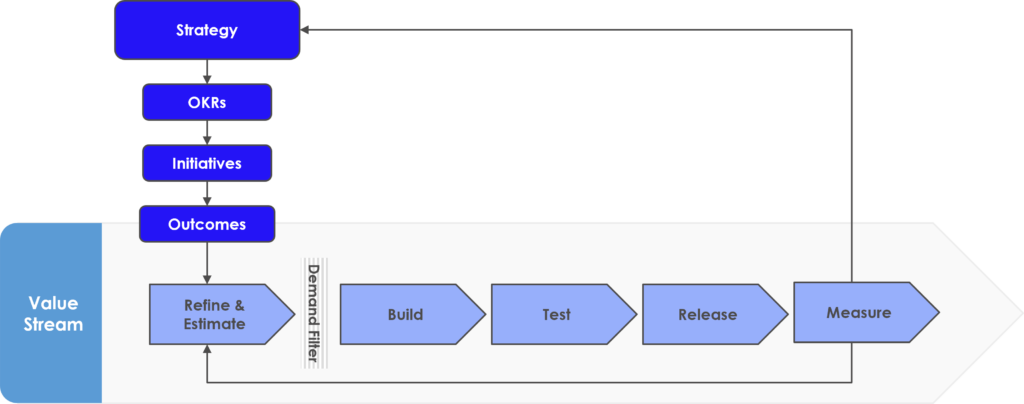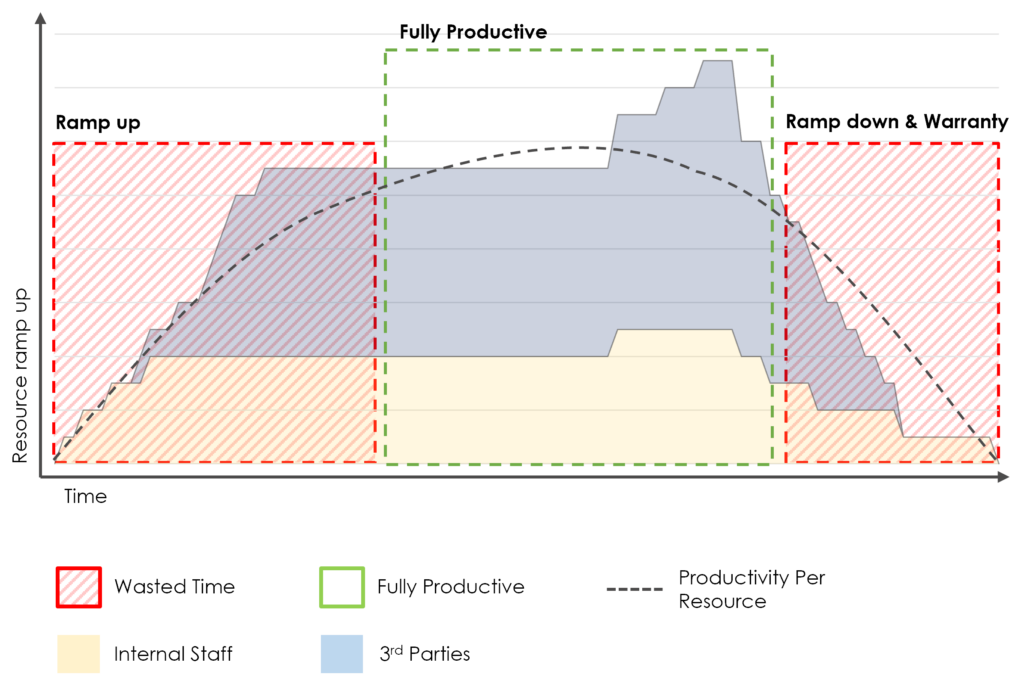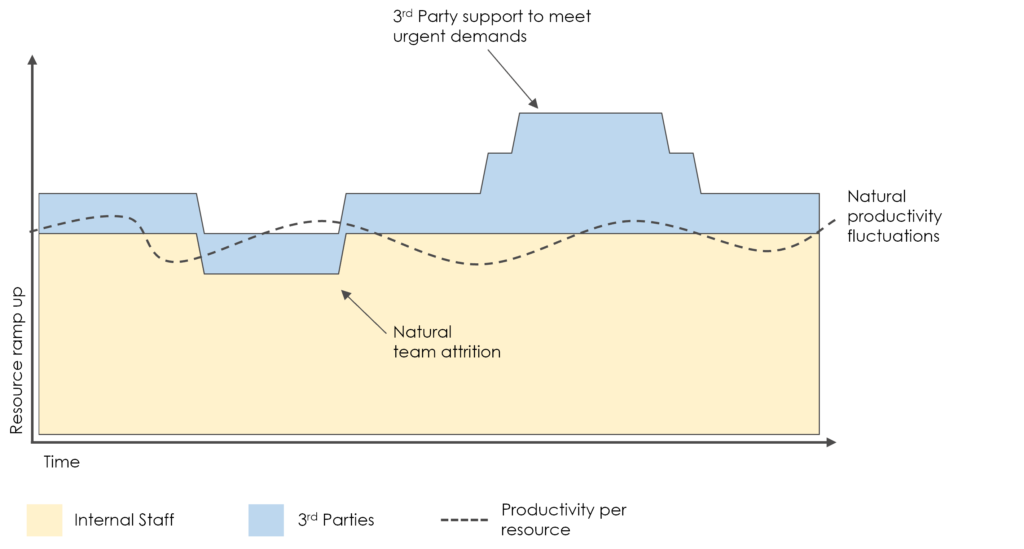Portfolio Planning

Value Stream Centric Delivery
What is a value stream? Why are the important? And what does it mean for your organisation?
For most organisations, value streams are simply an operating model design mechanism that describes the grouping of skills, functions and teams together to encompass all of the capabilities required to deliver a particular type of continuous value. SAfE distinguishes between operational value streams and development value streams. This distinction is important but can be deliberately overlooked when getting to grips with the basics of value streams.
What is a value stream?
A value stream is long lasting collection of cross-functional teams clustered together with the explicit purpose of delivering a specific type of value to an organisation’s customers. A value stream should be as self-sufficient in the delivery of its value as possible.
A simplistic example might be a “Mobile” value stream. This value stream is responsible for all the value that an organisation’s customers consume via its mobile channels. To be self-sufficient, the team requires a number different resources with a variety of functional skills like designers, product owners, scrum masters, mobile engineers and infrastructure engineers.

The role of Lean Portfolio Management in the context of value streams is to orchestrate strategic prioritisation and value realisation.
Why are value streams so important?
By organising all of these different skills into a permanent cluster of teams, organisations can ensure:
Fewer handoffs and unnecessary dependencies between teams; a significant cause of delay in large organisations
Increased focus on building deep, long lasting value-centric expertise
Stable teams that focus on delivering value, rather than projects
Continuous delivery of predictable value to customers
- Easier measurement of success (actual value created) of initiatives and learn from experience
Project-led resourcing vs. continuous value streams
One of the biggest challenges with traditional capacity management is the loss of productivity that the “ramp-up-ramp-down” way of working causes. This way of working typically results in resource not operating at full capacity for up to 35% of the time. During the early stages of the project, business cases are being written and resources are being onboarded.
But the most significant reason for low productivity during this period is knowledge ramp up. As resources are onboarded, they must learn about the technical context, design, and objectives of the initiative. This is ramp up occurs whether a resource is joining from within the organisation, or from outside the organisation (though joining from within the organisation may give them a head start). As we will see, value streams offer the opportunity to eliminate much of this productivity wastage.
There is a significant amount of waste in the "ramp up" and "ramp down" stages of a project.

By structuring the organisation around value streams, you establish a team of people continually focussed on delivering a specific type of value for you customers. The value stream becomes a river of expertise, beating to a predictable cadence, delivering continuous value to your customers.
As an example, let’s assume that we have established a value stream called, “Mobile”. This value stream is responsible for delivering our mobile product(s)to our customers. With a dedicated a team of people containing all the skills required to deliver value this type of value to the customer, capacity management becomes about ensuring that you have an appropriately prioritised backlog of work items (outcomes) for the value stream to execute.
This carries significant benefits, as it eliminates the boom-bust nature of traditional projects, and replaces it with a smooth, predictable level of productivity, and a much simpler capacity management challenge.
Explore more information about capacity management.

What is the difference between value streams, products and squads?
If you’re starting out on your journey to scale agile and are keen to keep things simple, you can treat these concepts as synonymous. If you want to dig into the semantic detail, read on.
The best way to think about the difference between these concepts is simply as operating model design tools and mechanisms to enable organisations to describe the matrix of paths through which value is created. For some organisations it makes sense to have a clear distinction between value streams / squads and products. This is especially true in component-centric platform-oriented organisations where technical resilience is especially paramount. In these organisations, you might choose to primarily align your teams around the technical components they support, as these components are the primary sources of value. In other organisations, the flow of value from the customer through to the products they consume and the consequential value they receive is easier to map.
The most important factor you should consider, is what are the primary centres around which it makes most sense to focus your organisation to build the deep wells of customer and value focused expertise and collaboration. It doesn't matter what language you choose, but these are very unlikely to be projects!




